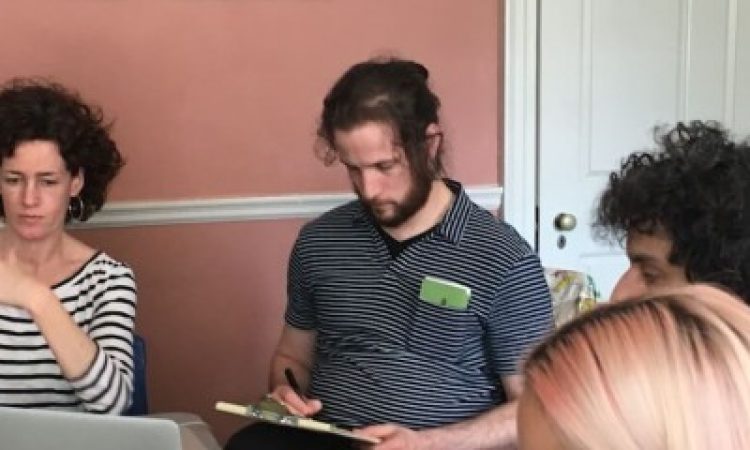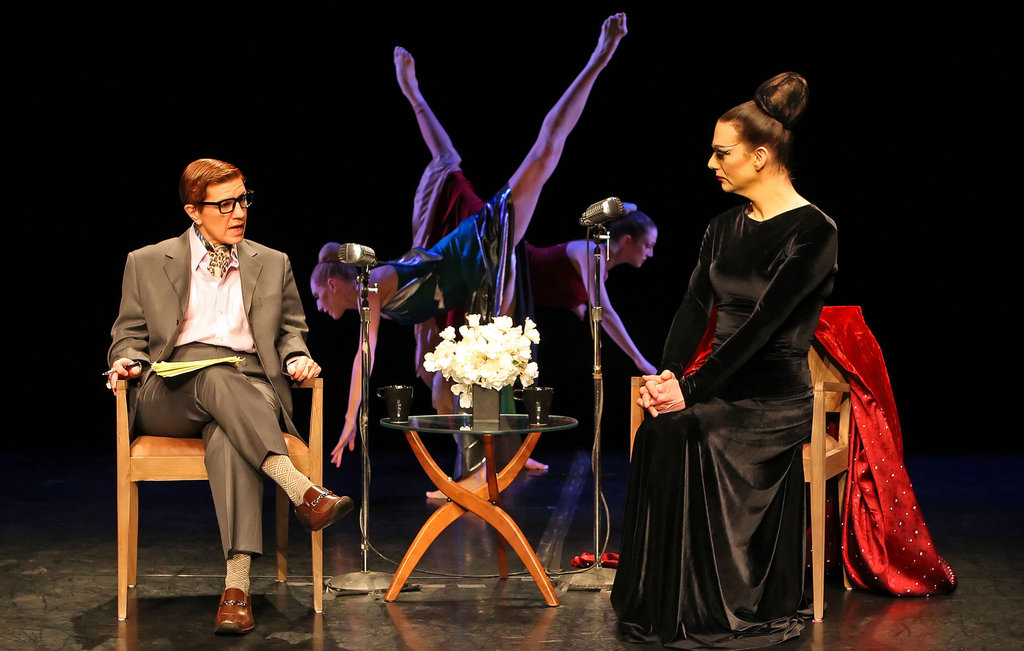Part I, by Lynn Brooks
As part of our ongoing skill development as dance-writing practitioners, thINKingDANCE (tD) writers gathered for a Saturday workshop with Temple University professor and dance writer Sherril Dodds, a former member of the tD board. As passionate about writing as about dance, Dodds succinctly explained her background in writing, in watching dance, and in guiding dance-thinkers. Her focus on finding the most vivid language and the just-right word was inspiring, as was her leading us to acknowledge our ways into a dance work. These focuses served as our guiding principles throughout the day.
Early on, Dodds established the schema of viewing our work as descriptive, interpretative, and/or evaluative, further encouraging us to consider how these stances interpenetrate one another and the ways they work for dancemakers, dance viewers, and the larger social-political context in which a dance piece and its audience live.
Andrew Klein on Michael Jackson’s Bad: locked in with group sequences of staccato, punching movement tied tightly to the massive snare drum on the downbeat: a forceful, one-dimensional immersion in a narrow idea of masculinity and in-group affirmation.
Dodds established a rhythm for our day’s work: Watch a selected example of dance-on-video, streamed on one or more of our handy laptops. For the second watch-through, we jotted down notes. Write a quick review, in whatever spell of time (10-20 minutes) Dodds allotted us. Exchange writing in pairs, each reader seeking the juiciest, most vivid phrase or sentence to pull out of the partner’s review. Share those findings with the group in round-table discussions that raised issues about choices, positions, and impacts our writing suggested.
Julius Ferraro on Sia’s Big Girls Cry: The joy is in watching one performer play tormentor and victim, her body acting the furious, wild mind, chemical torture pit, and her face reacting, with, from time to time, a bite at the assault coming out of the darkness.
The pieces we watched covered a range of types, tending toward the popular: Michael Jackson’s “Bad,” Sia’s “Big Girls Cry,” an excerpt of Camille A. Brown’s Black Girl Linguistic Play, Darlinda’s “You Make Me so Very Happy, George Bush,” a Nike women’s sports ad, and “Birds” by Yolande Snaith and David Hinton.
Ellie Goudie-Averill on Camille A. Brown’s Black Girl Linguistic Play: Camille says, “I am small, but if you see me, I’m tall!” and she is a giant on this stage—bright, complex, engaging.
As we talked, Dodds and others in the group wrote themes and words that captured key concepts, potent contributions, and playful ideas that arose and that might further infiltrate or shape our viewing, writing, and reading. I found it enormously stimulating to work on the work of dance writing.
Part II, by Maddie Hopfield
Following Sherril Dodds’ energizing workshop, a group of thINKingDANCE writers met again to flex their writing and reflective muscles. We viewed the University of the Arts Spring Dance Series (Program C) on Saturday night and composed a short response piece, then met for a group discussion with Carolyn Merritt on Sunday afternoon to reflect on the writing we had produced. With less than 24 hours to meditate on the show, we could further refine the quick-response skills we had practiced with Dodds the previous day.
Karl Surkan on Sofia Boutella’s Nike ad performance: Boutella’s feet tap and slide, arms always in motion as her body reacts to and is driven by the sound. This is pure movement, clean lines of genderless space.
In our workshop, we reflected on our experiences watching the show and discussed our preferences for note-taking during performances. There was a consensus about both wanting to give full presence to a live piece (no notes) and also to serve the work with specific descriptive language in the review (lots of notes). We considered our own writing’s place along the spectrum of description, interpretation, or evaluation, most of us wishing to challenge our habitual review writing practices.
Preeti Pathak on Yolande Snaith and David Hinton’s Birds: My brain already started questioning how video footage of birds could express performance, my perceptions already clouding my experience, which hadn’t even started.
The idea of evaluative writing brought up concerns in the political domain—a topic from the previous day with Dodds. Some writers expressed trepidation about writing in a strongly evaluative way, their fear rooted in being reductive or non-inclusive of other viewpoints. Some were apprehensive that the review might not serve the artist, especially if the project was not well-known or highly funded. I was inspired by Carolyn’s comment that, while being thoughtful and respectful is important, critics should also not feel the need to apologize for their opinions.
Another highlight of our discussion of ethics was the idea of expertise, and the level of knowledge or research a critic does or does not bring to a dance performance. Being aware of the context or background of a work was important to all of us, though we agreed that it was similarly valid to find a work inaccessible or unavailable to you based on your own background.
A large takeaway of the day is how any one of these topics translates into a series of choices critics make about how to spend their limited number of words. What feels most important to fill the page with?— the critique? the archiving? the poetic musing? Our group, smaller than the day before, shared a refreshing intimacy and candidness. As a new tD writer, I found it uplifting to ask serious questions and parse out our roles as writers in such an inviting and relaxed environment.
Many thanks to Janna Meiring for organizing the workshop, Sherril Dodds for Saturday’s energetic teaching, Carolyn Merritt for guiding the Sunday writing workshop, and Christ Church Neighborhood House for hosting these sessions.
by Lynn Matluck Brooks and Maddie Hopfield







